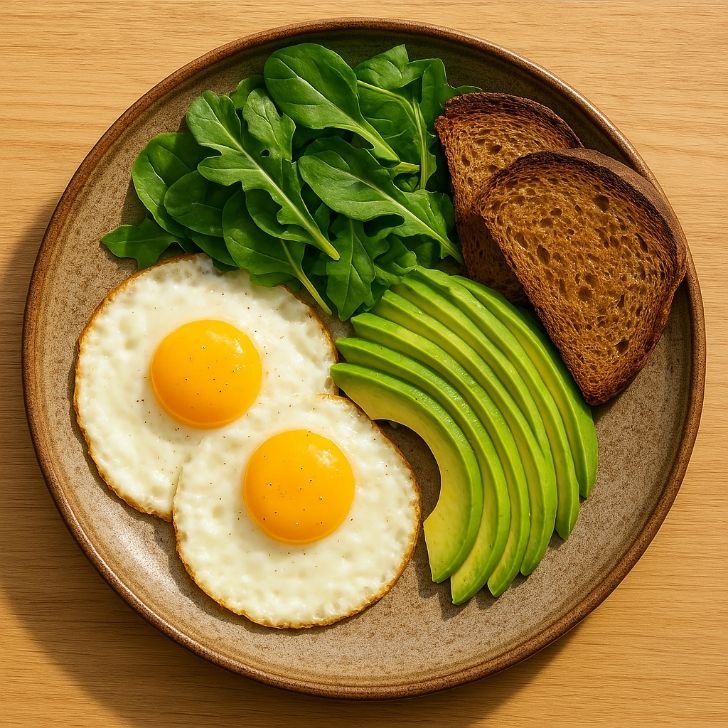Introduction
A lot of people today feel tired, stressed, and out of balance because modern life is too fast and noisy. Creating a daily wellness routine is one of the best way to bring your body and mind back into order. When you have a routine, you no longer just “react” to everything—insted, you choose the flow of your day.
In this article we gonna explore 10 important steps for a good health daily routine. These steps are simple but they are powerful because when you do them every day, they stack and build into a new version of yourself. From the morning when you open your eyes to the last moments before sleep, every choice you make either gives energy or take energy away.
Think of your routine like a foundation for a house. Without a strong foundation, everything fall down easy. But with strong daily wellness habits, you will feel more grounded, more focus, and more able to handle challenges.
Modern life stacks tiny stressors—late-night screens, grab-and-go meals, constant notifications—until your body starts running on fumes. A daily wellness routine works like a reset button for your nervous system and metabolism: small repeatable actions that lower noise and raise clarity. Even simple anchors—drink water on waking, step into daylight, move your body for 10 minutes—shift hormones toward balance and give you steadier energy. You don’t need a perfect plan; you need a reliable rhythm you can keep on busy days and slow days alike.
Step 1: Start with a Mindful Morning
Morning is like the first chapter of your story every day. If you begin it stressed and scrolling through phone notifications, the whole day can feel heavy. But if you begin it calm, your energy flows better.
A good wellness morning routine include:
Drinking warm water with lemon.
Gentle stretching or 5 minute yoga flow.
Journaling about three things you feel grateful.
Breathing deep for few minutes before breakfast.
These little rituals may seem small but they make huge difference. A mindful morning is not about perfection, it’s about setting the tone.

👉 Example: Instead of rushing for coffee, take a slow walk outside with the sunrise. Even if only 10 minute, it signals your body to wake up naturaly and regulate circadian rhythm.
From a brain perspective, first light plus slow breathing dampens the overnight cortisol surge and cues focus without franticness. Try a “three-part” mindful start: one glass of water, three grateful lines in your journal, five slow breaths with eyes soft. If you like structure, set a tiny ritual name—“sun-sip-breathe”—so your mind remembers. Over a week, this gentle morning wellness routine builds a calmer baseline, so you enter the day responding instead of reacting.
Step 2: Hydration is the Foundation
Water is not optional—it’s essential. Most people walk around slightly dehydrated and dont even know it. Dehydration affect mood, skin, digestion, and even how clear your thinking is.
For a strong daily wellness routine, drink 1–2 glasses of water right after waking. Then keep sipping through the day. Some people wait until they feel thirsty, but actually thirst is already a sign you dehydrated.
Add sea salt or electrolyte drops if you sweat a lot or drink coffee (which can dehydrate more).
Scientific studies show even 2% dehydration can drop energy and focus. Imagine how many people feel “tired” when actually they just need more water.
Think of water as the delivery system for every cell task—nutrients ride in, waste rides out. Even mild dehydration can mimic “low motivation” and fuzzy thinking. Make hydration automatic inside your daily wellness routine by batching it to cues you already do: a glass after brushing teeth, another before coffee, a refill every time you return to your desk. If plain water bores you, infuse with mint, cucumber, or citrus; the subtle flavor nudges you to sip more without sugar.
Step 3: Move Your Body Everyday
Movement is medicine. You dont have to lift heavy weights if you dont enjoy it. The secret of a daily wellness routine is to move in a way that brings joy.
Try these:
20 min morning walk in sunlight.
Dance to your favorite song.
Yoga flow in the evening.
Strength training 3 times per week.
Exercise should not feel like punishment. When you see movement as self-care instead of “burning calories,” you become more consistent. And consistency is what build long-term results.

💡 Fun fact: People who move for joy instead of obligation are 2x more likely to keep the habit after 1 year.
Movement isn’t only workouts; it’s all the “in-between” called NEAT—Non-Exercise Activity Thermogenesis. Park farther, climb stairs, pace on phone calls, do 10 air-squats while your tea steeps. Sprinkle micro-bursts through the day and your circulation, lymph, and mood all improve. If sunlight is available, walk outside for five minutes; light to the eyes plus motion tells your brain, “We’re safe. We’re awake.” That’s the kind of signal a sustainable daily wellness routine repeats.
Step 4: Eat Nutrient-Rich Foods for Energy
Food is not just calories—it is information that tell your body what to do. A good health routine require eating food that support your cells, not destroy them.
Instead of packaged snacks, go for:
Leafy greens (spinach, kale, arugula).
Colorful veggies (bell peppers, carrots, beets).
Healthy fats (avocado, olive oil, nuts).
Clean protein (salmon, beans, grass-fed chicken).
When you build your meals around whole foods, your body has the raw materials to heal, repair, and stay energized.

👉 Example: Breakfast could be overnight oats with chia seeds, almond butter, and blueberries. This balance of fiber, protein, and antioxidants keep you full and steady.
But when you eat processed breakfast cereal full of sugar, your blood sugar spike and crash, leaving you craving more all day. That is how routine goes wrong.
Meal prep isn’t fancy; it’s future-you being kind to present-you. Choose one protein, one grain, and two colorful veggies on Sundays, then rotate spices through the week—paprika today, turmeric-ginger tomorrow. This stabilizes blood sugar, which means steadier mood and fewer 3 p.m. crashes. As a rule, build plates that chew slowly (fiber) and burn slowly (healthy fats). Over time, your health and wellness routine starts to feel like momentum instead of discipline.
Step 5: Practice Mindful Breaks
The world is full of noise. Notifications, work emails, endless scrolling. Without intentional breaks, your nervous system is always on “fight or flight.”
A smart wellbeing routine includes little pauses through the day:
Step outside and take 5 deep breaths.
Stretch your shoulders and back.
Drink tea without your phone.
Close eyes and meditate for 3 minutes.
These micro-breaks recharge your system so you dont burn out. People think productivity means working nonstop, but science shows breaks actually increase focus and output.

Try “digital breathing spaces”: once every 60–90 minutes, close your laptop, place both feet on the floor, inhale for 4, exhale for 6, repeat six rounds. This pattern tilts your nervous system toward rest-and-digest and often returns you to work sharper than before. Guard these micro-pauses like appointments. In a month, you’ll notice less jaw tension, fewer doom-scroll spirals, and more presence—a quiet upgrade baked right into your wellbeing routine.
Step 6: Care for Your Emotional Wellness
Wellness is not only about body—it’s also about the mind and heart. Many people ignore emotions until they explode in stress or anxiety.
In your my wellness routine, include activities like:
Writing gratitude journal.
Talking with supportive friend.
Listening to calming music.
Practicing affirmations: “I am safe, I am growing, I am strong.”
When you care for emotional health, you prevent stress from draining your energy. And since stress hormones like cortisol can damage the body if too high, this step is not luxury—it’s necessary.

Use a two-minute “emotional scan” after lunch: name one sensation in your body, one thought on repeat, and one need you can meet this afternoon (water, sunlight, a boundary, a text to a friend). Naming reduces overwhelm; meeting one small need restores agency. Fold this into your daily wellness routine and your stress hormones stop yo-yoing as much. On heavier days, a five-minute voice note to yourself can function like mini-therapy: honest, compassionate, forward-moving.
Step 7: Consider Natural Supplements
Supplements are not magic, but they support your wellness daily routine when diet and stress make it hard to get enough nutrients.
Examples:
Magnesium for sleep and relaxation.
Probiotics for gut health and digestion.
Ashwagandha to balance stress and cortisol.
Vitamin D if you dont get enough sunlight.
Always ask a professional before starting, but remember that supplements can fill small gaps and make your wellness plan stronger.

Supplements shine when they support habits you’re already doing. Magnesium makes wind-down easier if you’re dimming lights and breathing slowly. Probiotics amplify a veggie-rich plate. Adaptogens help most when caffeine is reasonable and sleep has a bedtime. Treat pills like teammates, not saviors, and cycle them seasonally. Keep a tiny log—what you took, how you slept, afternoon energy—so your daily wellness routine becomes data-informed rather than guesswork.
Step 8: Limit Screen Time & Digital Detox
Screens are everywhere. Phone, laptop, TV—they drain your focus and overstimulate your brain. Too much screen before bed also blocks melatonin, the sleep hormone.
For a natural wellness routine, create tech-free zones:
No phone 1 hour before bed.
Read book instead of endless scrolling.
Eat meals without devices.
Even one screen-free evening per week can feel like a spa for your brain.
Create “friction” before default scrolling. Move social apps off your home screen, log out after each session, or install a 10-minute app timer. Replace one evening episode with a slow ritual—tidy five minutes, stretch five, brew tea five. This swaps blue-light arousal for parasympathetic cues and makes your natural wellness routine feel soothing instead of punitive. Remember: what you remove matters as much as what you add.
Step 9: Build a Night Routine for Sleep
Sleep is the king of recovery. Without sleep, even best food or exercise routine lose power. That’s why your wellness morning routine begins the night before.
Try this:
Dim lights 1 hour before bed.
Drink chamomile tea or warm milk.
Do gentle stretching.
Practice “4-7-8 breathing” (inhale 4, hold 7, exhale 8).
Make your bedroom cool, dark, and quiet. Think of it as your cave of recovery.
Anchor two fixed points—wake time and lights-out—and let the rest flex. Most bodies love repetition; hormones sync to predictable cues. A warm shower drops core temperature afterward, which nudges sleepiness; a paper book slows brainwaves more than a glowing feed. If worries spike in bed, keep a “parking-lot” notepad bedside, dump the thoughts, then return to 4-7-8. With practice, your wellness daily routine at night becomes a gentle runway into deep sleep.
Step 10: Reflect & Adjust
No routine is perfect from day one. That’s why reflecting is important. Each night, ask:
What gave me energy today?
What drained me?
What will I change tomorrow?
Over weeks, these reflections allow your daily wellness routine to evolve. It becomes unique to you, not just a copy of someone else’s plan.
Use the 1% rule: improve one tiny thing each week—add 5 ounces of water, one vegetable serving, two minutes of sunlight. Track three signals only: sleep quality, mid-afternoon energy, and mood on waking. When those trend up, you’re winning. If a habit keeps breaking, shrink it until it’s too small to fail. This iterative approach turns your daily wellness routine into a living system that fits real life, not an idealized calendar.
Internal Resources
Daily Hydration Tips: Why Water Is Your Most Powerful Tool
How to Start a Healthy Lifestyle
Ashwagandha vs Rhodiola: Which is Better for Stress Relief?
Conclusion
A daily wellness routine is not about doing everything perfect—it’s about small steps that build over time. From mindful mornings to nourishing foods, joyful movement, emotional care, and restful sleep, every habit works like a brick in the foundation of health.
Start with one habit today. Drink water first thing in the morning. Or stretch for 5 minutes before sleep. Over time, these little habits create a big transformation.
Imagine yourself thirty days from now: clearer mornings, fewer crashes, steadier moods. That didn’t come from one heroic weekend; it came from a dozen small, repeatable choices layered day after day. A daily wellness routine isn’t glamorous, but it’s astonishingly powerful. Start where resistance is lowest—water on waking, five breaths at lunch, dim lights after dinner—and let the wins compound. Momentum is a health habit, too.
Remember: wellness is not destination—it’s daily practice. And every practice make you feel better, more balanced, and more alive.
